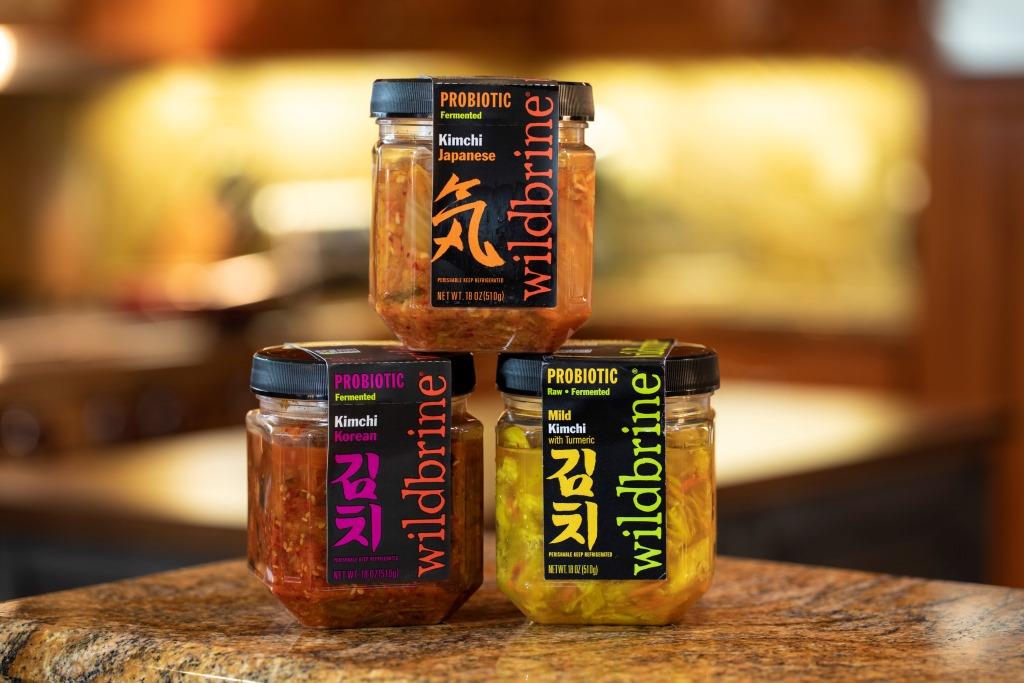What Does Kimchi Smell Like?
Fermentation elevates the aromas of its basic ingredients. Bread smells much better than flour. Wine’s aroma is infinitely more complex than grape juice. And the same is true of kimchi. So, what does kimchi smell like?
The answer, of course, depends on what the kimchi is made from, what stage the fermentation is in, and what organisms are doing the fermentation. In Korea, where kimchi has been a staple food for over a thousand years and is served as a side dish at almost every meal, it originated as a way to store vegetables over the region’s long, cold winters. A ceramic pot would be filled with cabbages and other vegetables, condiments like sea salt, garlic, onions, seaweed, and shrimp or fish sauce. Then it would be topped with brine and sunk into pits in the ground, where it would slowly undergo a lactic acid fermentation. As with all vegetables fermented with lactic acid-producing bacteria, the result was wholesome and safe to eat—and very delicious and nutritious to boot.
It also had a strong funky smell from the fermented seafood.
At wildbrine, we make a vegan version of Korean kimchi from Napa cabbage, green onions, seaweed, chili peppers, sea salt, sesame seeds, garlic, and ginger. (If you want to go traditionally Korean, you can always add a splash of fish sauce to achieve that salty funk so reminiscent of dirty socks.)
When you open a jar of wildbrine Korean vegan kimchi, you’ll notice a preponderance of pieces of Napa cabbage in a briny liquid, turned red from the spicy chili peppers that deliver a robust kick. Set the open jar on the table and lean over to take a good whiff. Those two ingredients—the cabbage and chilies—jump up to greet you. But don’t stop there. There’s the subtle salty tang of sea air, the scent you notice as you approach the ocean on a warm summer day at the beach. Lurking in the background are the faint notes of onion, garlic, and ginger.
Lean back and give your nose a respite for a minute, then lean into the jar again for another good whiff and you’ll likely notice something that’s not identifiable. It’s the ineffable scent of fermentation—the smell that arises from the action of the probiotic microbes working on the vegetables.
Ooh... The Smell of Kimchi!
Just like fresh-baked bread smells so delicious, and aged cheeses develop fermentation smells that transcend fresh milk, so this jar of fermented vegetables offers you something original that only a live food teeming with healthful bacteria can produce.
So, what does kimchi smell like? It smells like kimchi—and a whole lot more.
In Korea, kimchi’s fermented seafood smell, pungent nature, and effervescent kick makes most Koreans love it, although many westerners find the smell questionable. So now, South Korean scientists at the World Institute of Kimchi (yes, this exists) are working to tone down some of kimchi’s characteristics—including its strong smell—so it will appeal to foreigners’ palate, the Washington Post reports. “We’re trying to engineer the smell out of kimchi,” researcher Lee Mi-ae told the Post, “but it’s difficult because the smell is linked to the flavor of the kimchi.”
The attempt to tone down the stinky nose of the Korean version has drawn a peevish response from some traditional kimchi lovers in the West. Typical emails to the Post included, “I want my kimchi stinky, spicy, fizzy, and fermented as heck.” Another said, “I love the kimchi smell. You take that away, it will change its taste.” And, “Traditional food is about culture, not tourism. They shouldn’t change kimchi just because some foreigners don’t like the smell.” Here at wildbrine, we think our kimchi is excellent as a vegan product, but the stink is just a fish sauce’s bottle away.
Read why we make our kimchi vegan.
We also make a miso-horseradish kimchi, which tastes and smells quite different. Its ingredients are Napa cabbage, daikon radish, carrot, horseradish root, tamari, red miso, sea salt, ginger, chili pepper, garlic, and orange peel. At first sniff, the orange peel is sweetly present, followed closely by the distinct smell of the cabbage. The tamari and miso reveal themselves to the nose, and it all comes together in a sweet, mild, tasty vegetable medley that will be familiar to anyone who enjoys these Japanese flavors.
Kimchi is not only delicious, it’s full of healthful polyphenols and flavonoids. Polyphenols are anti-oxidants that may help prevent blood clots, reduce blood sugar levels, and lower heart disease risk. They may also promote brain function, improve digestion, and offer some protection against cancer, although more research is needed. Another reason why kimchi, and all its smells and aromas, should be part of your meals.
